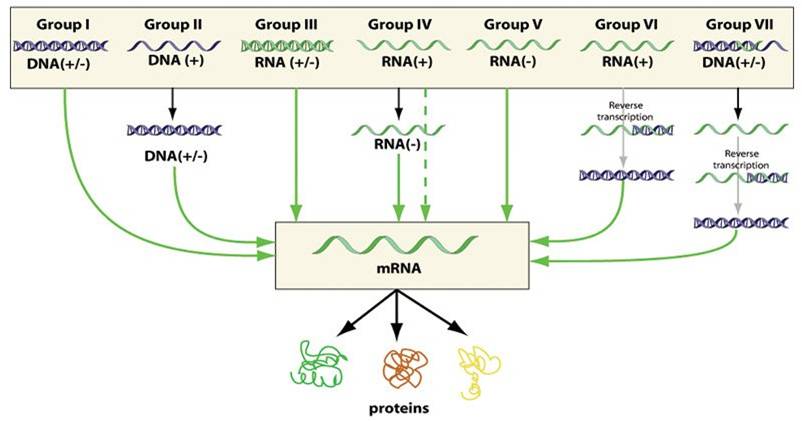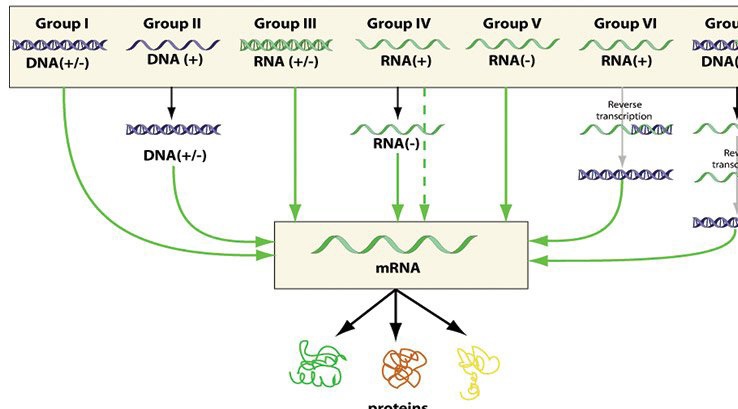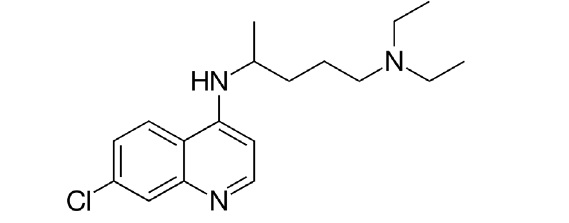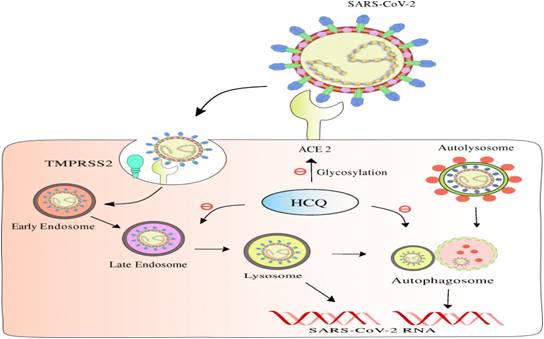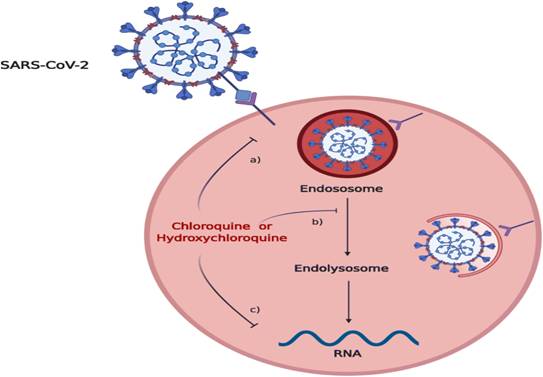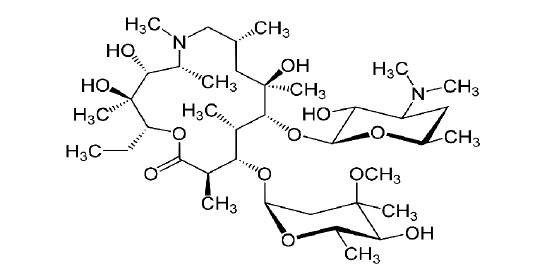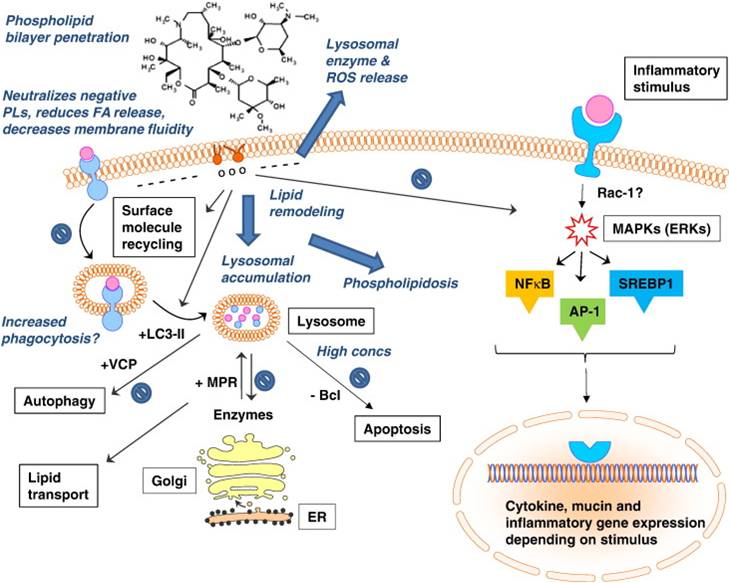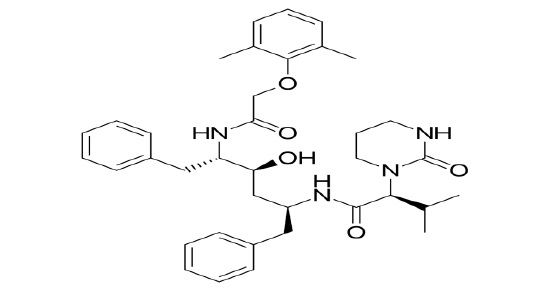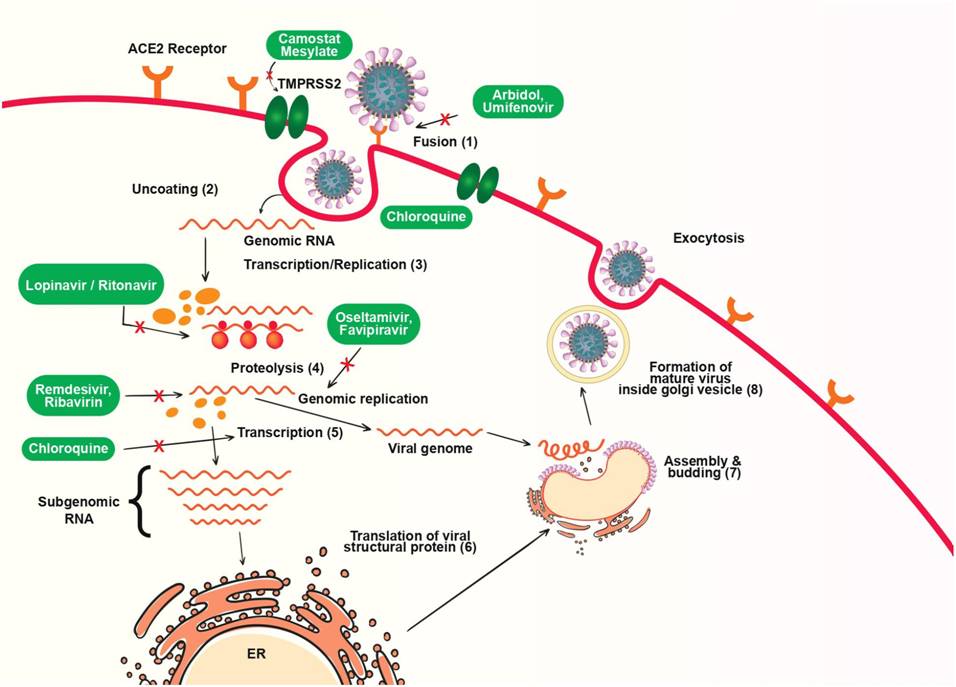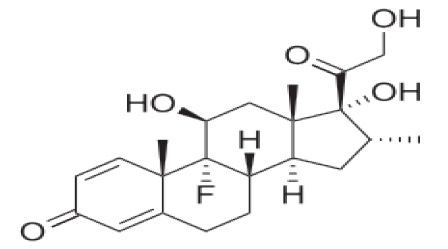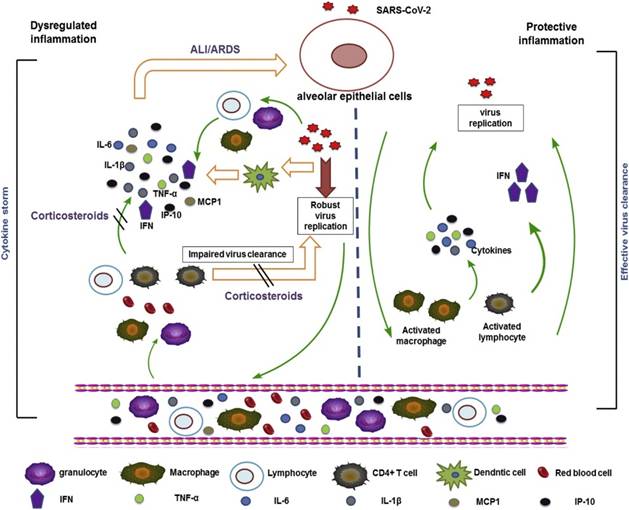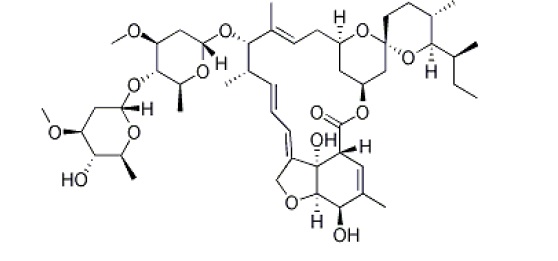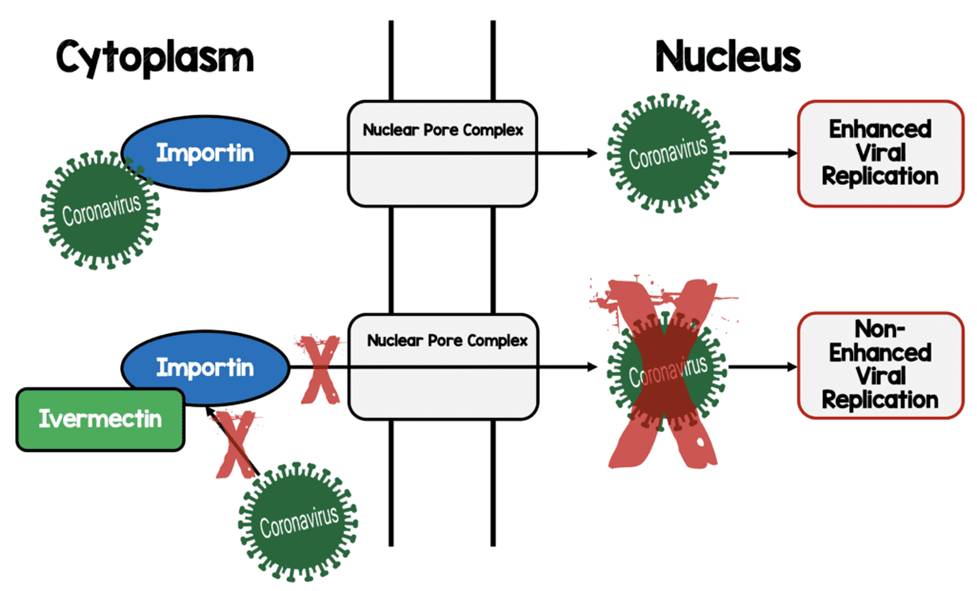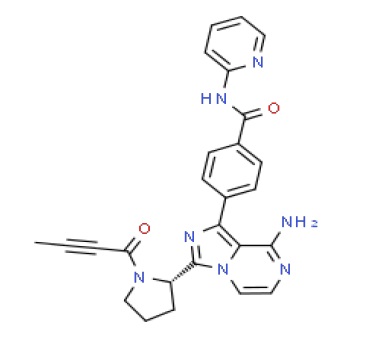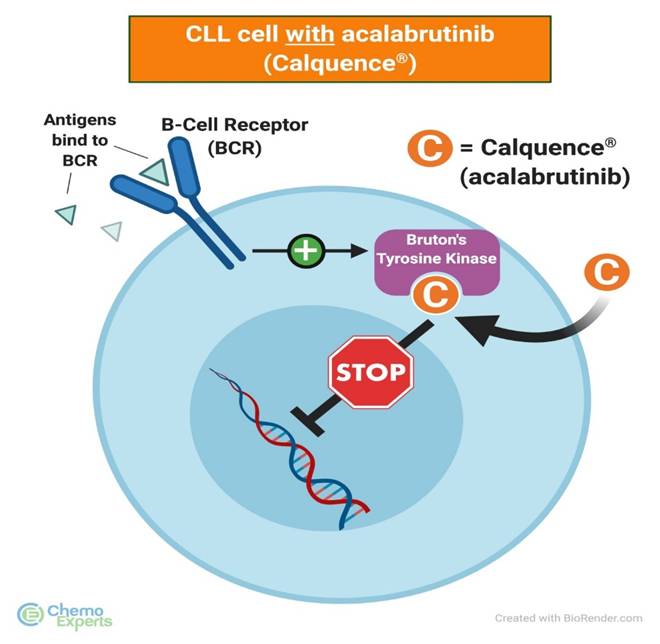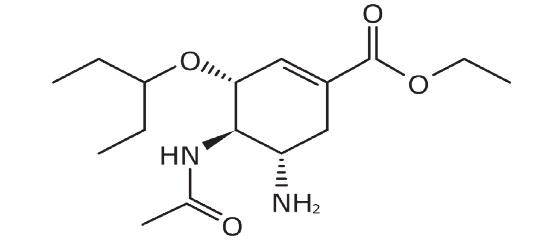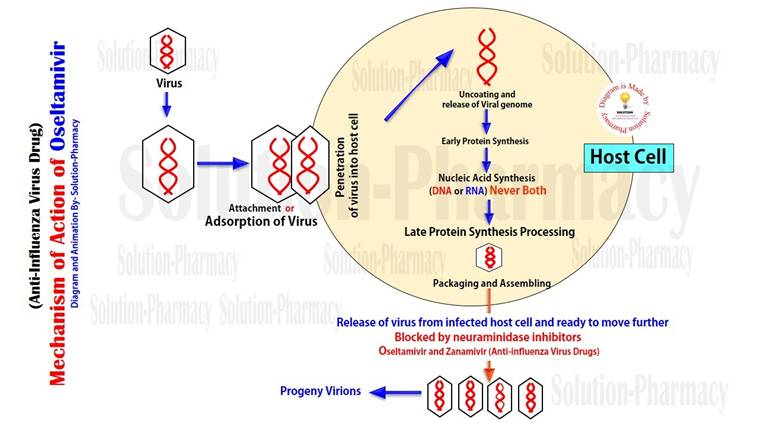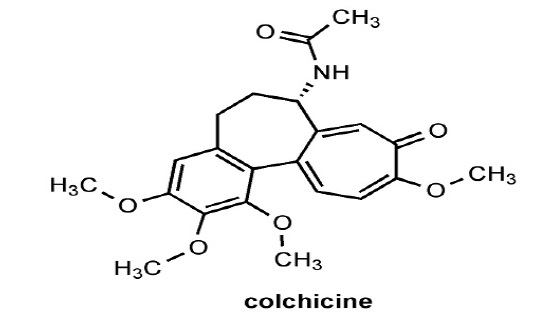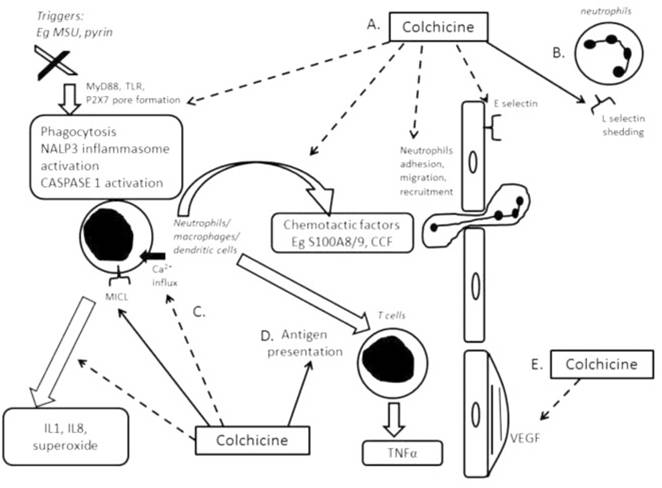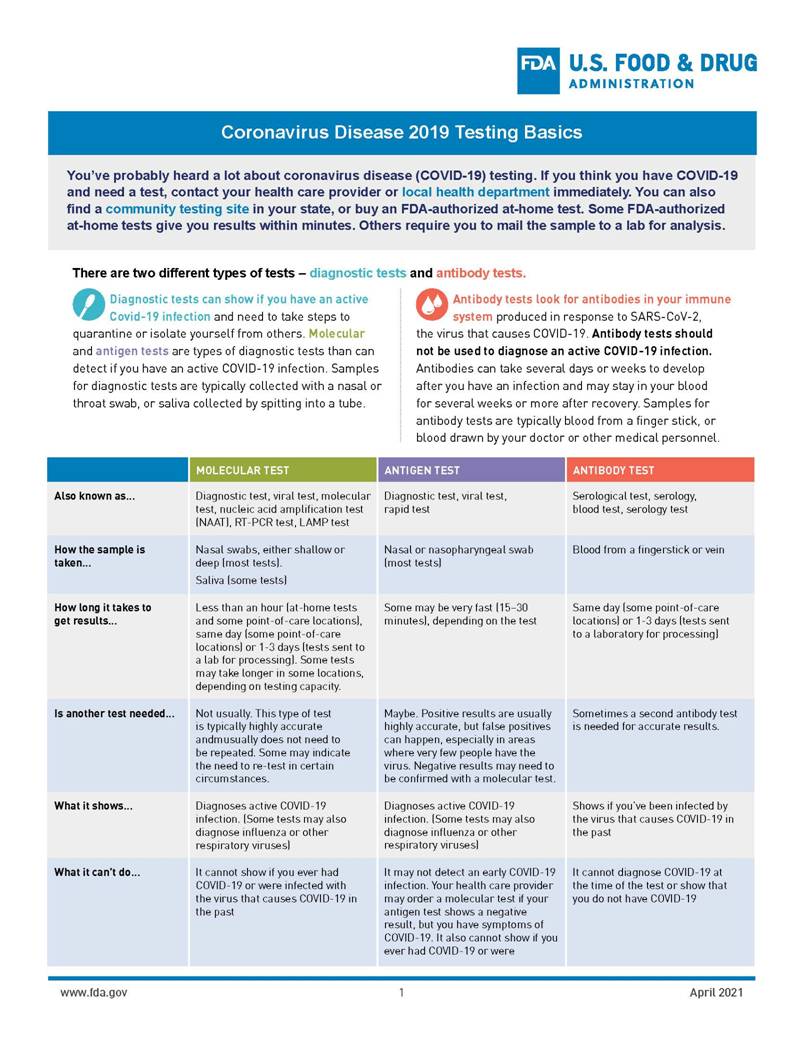
Journal of Clinical Images and Medical Case Reports
ISSN 2766-7820
Case Report - Open Access, Volume 2
Drugs used against COVID-19
Sowmya A
Department of Pharmaceutical Chemistry, Sri Siddhartha College of Pharmacy, Nuzivid, Andhra Pradesh, India.
*Corresponding Author: Sowmya A
Department of Pharmaceutical Chemistry, Sri
Siddhartha College of Pharmacy, Nuzivid, Andhra
Pradesh, India.
Email: adapa.sowmya@gmail.com
Received : May 01, 2021
Accepted : Nov 30, 2021
Published : Dec 07, 2021
Archived : www.jcimcr.org
Copyright : © Sowmya A (2021).
Citation: Sowmya A. Drugs used against COVID-19. J Clin Images Med Case Rep. 2021; 2(6): 1459.
Introduction
• Viruses are small obligate intracellular parasites, which
by definition contain either a RNA or DNA genome surrounded
by a protective, virus-coded protein coat.
• Viruses range from the structurally simple and small
parvoviruses and picornaviruses to the large and complex poxviruses and herpesviruses.
• Viruses are classified on the basis of morphology,
chemical composition, and mode of replication.
• The viruses that infect humans are currently grouped
into 21 families, reflecting only a small part of the spectrum of
the multitude of different viruses whose host ranges extend
from vertebrates to protozoa an d from plants and fungi to bacteria.
Figure 2: Different viruses.
Virus |
Antiviral drug |
Target |
Herpes viruses |
Vidarabine |
Virus polymerase |
Herpes simplex |
Acyclovir |
Virus polymerase |
Cytomegalovirus |
Gancyclovir |
Virus polymerase |
Retroviruses (HIV) |
Zidovudine, Didanosine, Zalcitabine, Lamivudine |
Reverse transcriptase |
Retroviruses (HIV) |
Saquinavir, Ritonavir, Indinavir, Nelfinavir |
HIV protease |
HCV, HSV |
Ribavirin |
RNA mutagen |
Influenza A |
Amantadine, Rimantadine |
Haemagglutinin protein |
Influenza B |
Relenza and Tamiflu |
Neuraminidase Inhibitor |
Picorna viruses |
Pleconaril |
Blocks attachment |
Hepatitis B & C |
Interferons |
Cell defence proteins |
The following properties have been used as a basis for the classification of viruses.
Virion morphology, including size, shape, type of symmetry, presence or absence of peplomers, and presence or absence of membranes.
Virus genome properties, including type of nucleic acid (DNA or RNA), size of genome in kilobases (kb) or kilobase pairs (kbp), strandedness (single or double), whether linear or circular, sense (positive, negative, ambisense), segments (number, size), nucleotide sequence, G+C content, and presence of special features (repetitive elements, isomerization, 5′-terminal cap, 5′-terminal covalently linked protein, 3′-terminal poly(A) tract).
Genome organization and replication, including gene order, number and position of open reading frames, a strategy of replication (patterns of transcription, translation), and cellular sites (accumulation of proteins, virion assembly, virion release).
Virus protein properties, including number, size, and functional activities of structural and nonstructural proteins, amino acid sequence, modifications (glycosylation, phosphorylation, myristylation), and special functional activities (transcriptase, reverse transcriptase, neuraminidase, fusion activities).
Antigenic properties.
Physicochemical properties of the virion, including molecular mass, buoyant density, pH stability, thermal stability, and susceptibility to physical and chemical agents, especially ether and detergents.
Biologic properties, including natural host range, mode of transmission, vector relationships, pathogenicity, tissue tropisms, and pathology
Classification of virus on the basis on presence of virus
The envelope is a lipid-containing membrane that surrounds some virus particles. It is acquired during viral maturation by a budding process through a cellular membrane
Virus encoded glycoproteins are exposed on the surface of the envelope. These projections are called peplomers.
Enveloped virus
• DNA viruses: Herpesviruses, Poxviruses, Hepadnaviruses
• RNA viruses: Flavivirus, Toga virus, Coronavirus, Hepatitis D, Orthomyxovirus, Paramyxovirus, Rhabdovirus, Bunyavirus, Filovirus
• Retroviruses
Non-enveloped virus
• viruses- parvovirus, adenovirus and papovavirus.
• RNA viruses- Picornavirus, Hepatitis DNA A virus and
Hepatitis E virus.
Classification of virus on the basis of mode of transmission
Virus transmitted through respiratory route: Swine flu, Rhino virus, Corona virus.
Virus transmitted through faeco-oral route: Hepatitis A virus, Polio virus, Rota virus.
Virus transmitted through sexual contacts: Retro virus.
Virus transmitted through blood transfusion: Hepatitis B virus, HIV.
Zoonotic virus: Virus transmitted through biting of infected
animals. Eg. Rabies virus, Alpha virus, Flavi virus
Antiviral drugs
An agent that kills a virus or that suppresses its ability to replicate and, hence, inhibits its capability to multiply and reproduce.
COVID VIRUS
Introduction
• Coronavirus disease (COVID-19) is an infectious disease caused by a newly discovered coronavirus.
• Most people infected with the COVID-19 virus will experience mild to moderate respiratory illness and recover without requiring special treatment. Older people, and those with underlying medical problems like cardiovascular disease, diabetes, chronic respiratory disease, and cancer are more likely to develop serious illness.
• The best way to prevent and slow down transmission is to be well informed about the COVID-19 virus, the disease it causes and how it spreads. Protect yourself and others from infection by washing your hands or using an alcohol based rub frequently and not touching your face.
• The COVID-19 virus spreads primarily through droplets of saliva or discharge from the nose when an infected person coughs or sneezes, so it’s important that you also practice respiratory etiquette (for example, by coughing into a flexed elbow).
Symptoms
COVID-19 affects different people in different ways. Most infected people will develop mild to moderate illness and recover without hospitalization.
Most common symptoms: Fever, dry cough, tiredness.
Less common symptoms: Aches and pains, sore throat, diarrhoea, conjunctivitis, headache, loss of taste or smell, a rash on skin, or discolouration of fingers or toes.
Serious symptoms: Difficulty breathing or shortness of breath, chest pain or pressure, loss of speech or movement.
Prevention
To prevent infection and to slow transmission of COVID-19, do the following:
• Wash your hands regularly with soap and water, or clean
them with alcohol-based hand rub.
• Maintain at least 1 metre distance between you and
people coughing or sneezing.
• Avoid touching your face.
• Cover your mouth and nose when coughing or sneezing.
• Stay home if you feel unwell.
• Refrain from smoking and other activities that weaken
the lungs.
• Practice physical distancing by avoiding unnecessary
travel and staying away from large groups of people.
Drugs used to treat corona virus
1. Remdesivir
A. IUPAC name:
2-ethylbutyl (2S)-2-{[(S)-{[(2R,3S,4R,5R)-5-{4-aminopyrrolo
[2,1-f][1,2,4]triazin-7-yl}-5-cyano-3,4-ihydroxyoxolan-2-yl]
methoxy}(phenoxy)phosphoryl]amino}propanoate
B. Trade name: Veklury
Dosage forms: Intravenous powder for injection (100 mg); intravenous solution (5 mg/mL)
C. Structure:
D. Uses:
• Remdesivir is used to treat people with coronavirus
disease 2019 (COVID-19) who are in a hospital.
• Remdesivir is for use in adults and children at least 12
years old and weighing at least 88 pounds (40 kilograms).
• Remdesivir may also be used for purposes not listed in
this medication guidelines
E. Side effects:
• An infusion reaction may occur with remdesivir with
symptoms such as low blood pressure, nausea, vomiting, sweating, and shivering. The healthcare professional should monitor
for side effects during remdesivir treatment.
• Information is limited and it is unknown at this time if
remdesivir causes serious side effects.
• In the case of a serious allergic reaction, symptoms
may include: rash, itching/swelling (especially of the face/
tongue/throat), severe dizziness, trouble breathing.
• This is not necessarily a complete list of possible side
effects.
• The doctor should be contacted for medical advice
about side effects.
2. Hydroxychloroquine and chloroquine
A. IUPAC name:
Hydroxychloroquine: 2-({4-[(7-chloroquinolin-4-yl) amino]
pentyl}(ethyl)amino)ethan-1-ol.
Chloroquine: 7-chloro-N-[5-(diethyl amino) pentan-2-yl]
quinolin-4-amine.
B. Trade name: Hydroxychloroquine: Plaquenil.
Chloroquine: Aralen
C. Structure: Hydroxychloroquine:
E. Uses
Hydroxychloroquine is used to treat: rheumatoid arthritis,
discoid and systemic lupus erythematosus (SLE), juvenile idiopathic arthritis (JIA).
Chloroquine is used to treat or prevent malaria, a disease
caused by parasites that enter the body through the bite of a
mosquito. Chloroquine is not effective against all strains of malaria, or against malaria in areas where the infection has been
resistant to a similar drug called hydroxychloroquine.
Chloroquine is also used to treat amoebiasis (infection
caused by amoebae).
Chloroquine may also be used for purposes not listed in this medication guide.
F. Side effects:
Hydroxychloroquine: headache, dizziness, loss of appetite,
nausea, diarrhoea, stomach pain, vomiting, rash.
Chloroquine: • A seizure.
• Ringing in your ears, trouble hearing.
• Severe muscle weakness, loss of coordination, underactive reflexes.
• Low blood cell counts-fever, chills, tiredness, mouth
sores, skin sores, easy bruising, unusual bleeding, pale skin, cold
hands and feet, feeling light-headed or short of breath.
• Low blood sugar--headache, hunger, sweating, irritability, dizziness, fast heart rate, and feeling anxious or shaky. or
• A serious drug reaction that can affect many parts of
your body--skin rash, fever, swollen glands, muscle aches, severe weakness, unusual bruising, or yellowing of your skin or
eyes.
Taking chloroquine long-term or at high doses may cause irreversible damage to the retina of your eye.
Stop taking chloroquine and tell your doctor if you have:
blurred vision, trouble focusing, trouble reading; distorted vision, poor night vision; changes in your colour vision; hazy
or cloudy vision; seeing light flashes or streaks, seeing halos
around lights; or increased sensitivity to light.
Common side effects may include: nausea, vomiting, diarrhoea, stomach cramps; headache; unusual changes in mood
or behaviour; hair loss; or change in hair or skin colour.
3. Azithromycin
A. IUPAC Nname: (2R,3S,4R,5R,8R,10R,11R,12S,13S,14R)-11-{[(2S,3R,4S,6R)-
4 - ( d i m e t hy l a m i n o ) - 3 - hy d rox y- 6 - m e t hy l oxa n - 2 - y l ]
oxy}-2-ethyl-3,4,10-trihydroxy-13-{[(2R,4R,5S,6S)-5-hydroxy-4-methoxy-4,6-dimethyloxan-2-yl]oxy}-3,5,6,8,10,12,14-
heptamethyl-1-oxa-6-azacyclopentadecan-15-one
B. Trade name: 1. Act Azithromycin
2. AzaSITE
3. Ag-azithromycin
C. Structure:
E. Uses:
Azithromycin can fight a wide range of bacteria, including
many in the Streptococcus family. It can stop harmful bacteria
from growing.
Healthcare providers tend to use this drug to treat mild-tomoderate infections of the lungs, sinuses, skin, and other body
parts.
A doctor may prescribe azithromycin to treat the following
bacterial infections:
• Sinus infections related to Moraxella catarrhalis or Streptococcus pneumoniae
• Community-acquired pneumonia related to Chlamydia
pneumoniae, Haemophilus influenzae, or S. pneumoniae
• Chronic obstructive pulmonary disease (COPD) complications related to M. catarrhalis or S. pneumoniae
• Some skin infections related to Staphylococcus aureus,
Streptococcus pyogenes, or Streptococcus agalactiae
• Tonsillitis related to S. pyogenes
• Urethritis and cervicitis related to Chlamydia trachomatis
• Cervicitis genital ulcers (in males) related to Haemophilus
ducreyi
• Certain ear infections in children aged 6 months and over,
such as those related to M. catarrhalis
F. Side effects: Diarrhoea or loose stools, Nausea, Abdominal pain, Stomach upset, Vomiting, Constipation, Dizziness, Tiredness, Headache, Vaginal itching or discharge, Nervousness, Sleep problems (insomnia), Skin rash or itching, Ringing in the ears, Hearing problems, Or decreased sense of taste or smell.
4. Kaletre
Kaletre is a combination of a protease inhibitor lopinavir
(200 mg) plus a booster dose (50 mg) of ritonavir in the same
pill. The trade name is Kaletra in Western countries and Aluvia
in low income countries. In resource-limited countries this is a
brown tablet with the same design (trade name Aluvia).
A. IUPAC name: Lopinavir: (2S)-N-[(2S,4S,5S)-5-[2-(2,6-dimethylphenoxy)acet
mido]-4-hydroxy-1,6-diphenylhexan-2-yl]-3-methyl-2-(2-oxo1,3-diazinan-1-yl)butanamide
Ritonavir: (1,3-thiazol-5-yl)methyl N-[(2S,3S,5S)-3-hydroxy5-[(2S)-3-methyl-2-{[methyl({[2-(propan-2-yl)-1,3-thiazol-4-yl]
methyl})carbamoyl]amino}butanamido]-1,6-diphenylhexan-2-
yl]carbamate
B. Trade name: Aluvia
C. Structure: Lopinavir:
E. Uses
This combination product contains two medications: Lopinavir and ritonavir. This product is used with other HIV medications
to help control HIV infection. It helps to decrease the amount
of HIV in your body so your immune system can work better.
This lowers your chance of getting HIV complications (such as
new infections, cancer) and improves your quality of life. Both
lopinavir and ritonavir belong to a class of drugs known as HIV
protease inhibitors. Ritonavir increases ("Boosts") the levels of lopinavir. This helps lopinavir work better. Lopinavir/ritonavir is
not a cure for HIV infection. To decrease your risk of spreading HIV disease to others, continue to take all HIV medications
exactly as prescribed by your doctor. Use an effective barrier
method (latex or polyurethane condoms/dental dams) during
sexual activity as directed by your doctor. Do not share personal
items (such as needles/syringes, toothbrushes, and razors) that
may have contacted blood or other body fluids. Consult your
doctor or pharmacist for more details.
F. Side effects:
Lopinavir and ritonavir may cause side effects: weakness,
diarrhoea, gas, heartburn, weight loss, headache, difficulty
falling asleep or staying asleep, muscle pain, numbness,
burning, or tingling in the hands or feet, stomach pain, nausea,
and vomiting,
Some side effects can be serious: nausea, vomiting, stomach
pain, extreme tiredness, loss of appetite, pain in the upper
right part of the stomach, yellowing of the skin or eyes, itchy
skin, dizziness, lightheadedness, fainting, irregular heartbeat,
blisters, rash
5. Dexamethasone:
A. IUPAC name: (1R,2R,3aS,3bS,9aS,9bR,10S,11aS)-9b-fluoro-1,10-dihydroxy-1-(2-hydroxyacetyl)-2,9a,11a-trimethyl-1H,2H,3H,3aH,
3bH,4H,5H,7H,9aH,9bH,10H,11H,11aH-cyclopenta[a]phenanthren-7-one.
B. Trade name: 1. Decadron
2. Accufix II
C. Structure:
E. Uses:
1. Dexamethasone is used to treat conditions such as arthritis, blood/hormone disorders, allergic reactions, skin diseases,
eye problems, breathing problems, bowel disorders, cancer,
and immune system disorders.
2. It is also used as a test for an adrenal gland disorder (Cushing’s syndrome).
3. Dexamethasone belongs to a class of drugs known as
corticosteroids. It decreases your immune system’s response
to various diseases to reduce symptoms such as swelling and
allergic-type reactions.
F. Side effects:
• upset stomach, stomach irritation, vomiting, headache, dizziness, insomnia, restlessness, depression, anxiety,
acne, increased hair growth, easy bruising, irregular or absent
menstrual periods, upset stomach, stomach irritation, vomiting,
headache, dizziness, insomnia, restlessnes, depression, anxiety,
acne, increased hair growth, easy bruising, irregular or absent
menstrual periods.
6. Ivermectin
A. IUPAC name:
( 1 ' R , 2 R , 4 ' S , 5 S , 6 R , 8 ' R , 1 0 ' E , 1 2 ' S , 1 3 ' S , 1 4 ' E -
,16'E,20'R,21'R,24'S)-21',24'-dihydroxy-12'-{[(2R,4S,5S,6S)-
5-{[(2S,4S,5S,6S)-5-hydroxy-4-methoxy-6-methyloxan-2-yl]
oxy}-4-methoxy-6-methyloxan-2-yl]oxy}-5,11',13',22'-tetramethyl-6-(propan-2-yl)-3',7',19'-trioxaspiro[oxane-2,6'-tetracyclo[15.6.1.1⁴,⁸.0²⁰,²⁴]pentacosane]-10',14',16',22'-tetraen-2'-one;
(1'R,2R,4'S,5S,6R,8'R,10'E,12'S,13'S,14'E,16'E,20'R,21'R,24'S-
)-6-[(2R)-butan-2-yl]-21',24'-dihydroxy-12'-{[(2R,4S,5S,6S)-
5-{[(2S,4S,5S,6S)-5-hydroxy-4-methoxy-6-methyloxan-2-yl]
oxy}-4-methoxy-6-methyloxan-2-yl]oxy}-5,11',13',22'-
tetramethyl-3',7',19'-trioxaspiro[oxane-2,6'-tetracyclo[15.6.1.1⁴,⁸.0²⁰,²⁴]pentacosane]-10',14',16',22'-tetraen-2'-
one
B. Trade name:
1. Rosiver
2. Sklice
3. Soolantra
4. Stromectol
E. Uses:
Ivermectin tablets are approved by the FDA to treat people
with intestinal strongyloidiasis and onchocerciasis, two conditions caused by parasitic worms. In addition, some topical (on
the skin) forms of ivermectin are approved to treat external
parasites like head lice and for skin conditions such as rosacea
F. Side effects:
The more common side effects of this drug when it’s used
to treat intestinal infections include: tiredness, loss of energy,
stomach pain, loss of appetite, nausea, vomiting, diarrhea, dizziness, sleepiness or drowsiness, itchiness.
The more common side effects of this drug when it’s used
to treat intestinal infections include: tiredness, loss of energy,
stomach pain, loss of appetite, nausea, vomiting, diarrhoea, dizziness, sleepiness or drowsiness, itchiness.
7. Acalabrutinib
A. IUPAC name:
4-{8-amino-3-[(2S)-1-(but-2-ynoyl)pyrrolidin-2-yl]
imidazo[1,5-a]pyrazin-1-yl}-N-(pyridin-2-yl)benzamide
B. Trade name: Calquence
E. Uses:
Acalabrutinib blocks the action of certain enzymes in the
body, which can interfere with the growth and spread of cancer
cells.
Acalabrutinib is used to treat mantle cell lymphoma (a type
of non-Hodgkin lymphoma) in adults. acalabrutinib is given after other treatments have failed.
Acalabrutinib was approved by the US Food and Drug Administration (FDA) on an "accelerated" basis. In clinical studies,
patients responded to this medicine. However, further studies
are needed.
Acalabrutinib may also be used for purposes not listed in this
medication guide.
F. Side effects:
• unusual bleeding (nose, mouth, vagina, or rectum), or
any bleeding that will not stop;
• signs of bleeding inside your body--dizziness, weakness, confusion, problems with speech, prolonged headache,
black or bloody stools, pink or brown urine, or coughing up
blood or vomit that looks like coffee grounds;
• heart rhythm problems--chest pain, shortness of
breath, pounding heartbeats or fluttering in your chest, feeling
light-headed;
low red blood cells (anemia)--pale skin, unusual tiredness,
feeling light-headed or short of breath, cold hands and feet;
signs of infection--fever, chills, tiredness, flu-like symptoms,
cough with mucus, chest pain, trouble breathing; or
signs of a serious brain infection--any change in your mental state, decreased vision, weakness on one side of your body,
or problems with walking (may start gradually and get worse
quickly).
Your cancer treatments may be delayed or permanently discontinued if you have certain side effects.
Common side effects may include: bruising, headache, muscle pain, diarrhea or feeling tired.
8. Oseltamivir
A. IUPAC name:
ethyl (3R,4R,5S)-5-amino-4-acetamido-3-(pentan-3-yloxy)
cyclohex-1-ene-1-carboxylate
B. Trade name: 1. Tamiflu
2. Ebilfumin
3. Oseltamivir Phosphate Capsules
4. Oseltamivir Powder for Oral Suspension
E. Uses:
Oseltamivir is used to treat symptoms caused by the flu virus
(influenza). It helps make the symptoms (such as stuffy nose,
cough, sore throat, fever/chills, aches, tiredness) less severe
and shortens the recovery time by 1-2 days. This medication
may also be used to prevent the flu if you have been exposed
to someone who already has the flu (such as a sick household
member) or if there is a flu outbreak in the community. Talk to
your doctor for more details. This medication works by stopping the flu virus from growing. It is not a substitute for the flu
vaccine
F. Side effects:
Oseltamivir may cause side effects: nausea, vomiting,
stomach pain, diarrhoea, headache, rash, hives, or blisters on
the skin, mouth sores, itching, swelling of the face or tongue,
difficulty breathing or swallowing, hoarseness, confusion,
speech problems, shaky movements, Hallucinations (seeing
things or hearing voices that do not exist)
9. Colchicine
A. IUPAC name:
N-{3,4,5,14-tetramethoxy-13-oxotricyclo[9.5.0.0²,⁷]hexadeca-1(16),2(7),3,5,11,14-hexaen-10-yl}acetamide
B. Trade name: Colchicine
E. Uses:
This medication is used to prevent or treat gout attacks
(flares). Usually gout symptoms develop suddenly and involve
only one or a few joints. The big toe, knee, or ankle joints are
most often affected. Gout is caused by too much uric acid in
the blood. When uric acid levels in the blood are too high, the
uric acid may form hard crystals in your joints. Colchicine works
by decreasing swelling and lessening the build up of uric acid
crystals that cause pain in the affected joint(s).This medication
is also used to prevent attacks of pain in the abdomen, chest, or
joints caused by a certain inherited disease (familial Mediterranean fever). It is thought to work by decreasing your body’s production of a certain protein (amyloid A) that builds up in people
with familial Mediterranean fever. Colchicine is not a pain medication and should not be used to relieve other causes of pain.
F. Side effects: Stomach pain, nausea, vomiting, diarrhoea, unusual bruising or bleeding, sore throat, fever, chills, and other signs of infection, paleness or grayness of the lips, tongue, or palms, slowed breathing, slowed or stopped heartbeat.
10. Convalescent plasma
In the absence of drugs to cure Coronavirus infection or vaccines to prevent COVID-19, currently, plasma therapy is being
seen as a potential treatment for critically ill-patients. It has also
got a stamp of approval from the Food and Drug Administration
(FDA) of United States. In India, states like Delhi, Maharashtra,
Punjab, among others have already started using Convalescent
Plasma Therapy (CPT) as a treatment for serious COVID-19 patients.
What is plasma therapy?
Plasma Therapy involves transfusion of antibodies from someone who has recovered from COVID-19 (convalescent coronavirus patient) into a critical patient. The therapy is based on the principle that the blood of a recovered patient is rich in antibodies needed to combat COVID-19. Antibodies are Y shaped proteins produced by a human body and used by the immune system to identify and neutralise foreign objects such as bacteria and viruses. These antibodies are expected to help critical patients recover.
How does plasma therapy work?
Blood plasma, a yellowish liquid is a component of blood and consists of protein, minerals and antibodies. If someone has recovered from COVID-19 there are chances that the person's body has developed antibodies that helped him/her to fight the virus. The same antibodies, if infused into a critical patient may provide passive immunity and help in the recovery process.
What is the procedure of convalescent plasma therapy?
First blood is drawn from the potential donor to check for the presence of antibodies. Once it is clear that an individual can donate plasma, the blood is extracted and plasma is separated from the blood. The point to be noted is, only plasma is taken from the blood and at the end, blood is transfused back into the body of the donor.
Who can donate plasma?
Patients who have gone through the cycle of Coronavirus and have recovered from COVID-19 can donate plasma. 500 ml of plasma can be donated after 14 days of recovering from the disease. According to the information available on Delhi's plasma bank website, there are seven categories of people who cannot donate plasma. This includes diabetics on insulin, pregnant women, people having body weight less than 50 kg, cancer survivor, among others.
At What stage of COVID-19 is plasma therapy recommended?
According to Dr Sandeep Budhiraja, Group Medical Director, Max Healthcare who did the first plasma therapy in India for a COVID patient back in April, the best stage to give plasma is ?moderate severity' - when the patient's requirement of oxygen increases. He says, 'The convalescent plasma therapy is not much effective when a patient is on a ventilator.'
Dr Suresh Kumar, Medical Director at LNJP (Lok Nayak) Hospital in Delhi says that plasma therapy benefits people more
who:
• Are under 65 years of age.
• Have only SARI (severe acute respiratory infections).
• Have acute respiratory failure because of COVID.
• Have oxygen saturation is less than 90.
Are there any risks involved in plasma therapy?
Blood transfusion related infections can be transmitted, therefore, before plasma transfusion, test for HIV and other diseases, which are usually done for all transfusions are conducted.
11. Monoclonal antibodies
The body’s immune system generates antibodies as a defense mechanism against unfamiliar molecules. The scientific term for such unfamiliar molecules is antigens. Molecules from bacteria and viruses can act as antigens, prompting the production of antibodies.
Antibodies bind to antigens. This tells specialized cells of the immune system to kill the invading pathogen.
The bodies of the majority of people who recover from COVID-19 produce antibodies to the SARS-CoV-2 virus. Scientists have found that these antibodies persist for at least 5–7 months after the infection.
However, scientists can also produce these antibodies in a laboratory setting to be infused into the blood.
Monoclonal antibodiesTrusted Source are identical copies of an antibody that targets one specific antigen. Scientists can make monoclonal antibodies by exposing white blood cells to a particular antigen.
They can then select a single white blood cell or clone and use this as the basis to produce many identical cells, making many identical copies of the monoclonal antibody.
Antibody treatments in themselves are not new. Healthcare professionals have used monoclonal antibodies, for example, to treat viral infections such as Ebola Trusted Source and HIV.
Each monoclonal antibody is specific to its matching antigen. For COVID-19, there are several authorized monoclonal antibody therapies.
Anti-SARS-CoV-2 monoclonal antibodies
The SARS-CoV-2 virus’s spike glycoprotein, which sits on its surface, functions to facilitate the virus’s entry into the body’s cells. Some SARS-CoV-2 antibodies bind to the spike protein and prevent the virus from entering the cell.
Currently, all the monoclonal antibodies for COVID-19 for which the FDA have issued emergency use authorization target the spike protein.
Bamlanivimab and etesevimab
Eli Lilly and Company developed two different antibody therapies: Bamlanivimab monotherapy and combination bamlanivimab and etesevimab therapy
On February 9, 2021, the FDA authorized Trusted Source the emergency use of combined bamlanivimab and etesevimab for people with mild-to-moderate COVID-19. The EMA are currently reviewing the data behind these antibodies.
The FDA also authorized Trusted Source bamlanivimab therapy on November 10, 2020. However, on March 24, 2021, Eli Lilly and Company halted distribution of the bamlanivimab monotherapy, noting:
Given the sustained increase in SARS-CoV-2 viral variants in the United States that are resistant to bamlanivimab administered alone, and the availability of other authorized monoclonal antibody therapies that are expected to retain activity.
Eli Lilly and Company recently announced their phase 3 clinical trial data in a press release. They said that the combined bamlanivimab and etesevimab therapy reduced the risk of COVID-19 hospitalizations and death by 87% in people with mildto-moderate symptoms at high risk of severe disease.
However, these beneficial results were in outpatients who were not experiencing severe COVID-19. Dr. Lundgren stated that Eli Lilly and Company are currently investigating the efficacy of these monoclonal antibodies in hospitalized patients through a National Institutes of Health (NIH)-sponsored inpatient clinical trial called ACTIV-3Trusted Source.
Initial results with bamlanivimab have not indicated any particular efficacy for inpatients variants, the U.S. government, in coordination with Eli Lilly and Company, will stop the distribution of bamlanivimab.”
The FDA advise the use of alternative monoclonal treatments in light of the increase in the prevalence of SARS-CoV-2 variants against which bamlanivimab has shown reduced efficacy.
REGN-COV2: Casirivimab and imdevimab
Regeneron developed a “combination antibody cocktail” called REGN-COV2, which contains the antibodies casirivimab and imdevimab.
On November 21, 2020, the FDA authorized Trusted Source the emergency use of REGN-COV2 for mild-to-moderate COVID-19. The EMA have concluded that healthcare professionals can use this treatment for COVID-19 patients at risk of developing severe disease but who do not require oxygen treatment. The agency will continue their rolling review to support national health authorities in European Union countries, who issue authorization for use individually
The NIH, on the other hand, have stated that there is not enough evidence to support its use and that there is a need to review phase 3 trial data, which were released on March 23, 2021.
According to Regneron’s phase 3 clinical trial data, the combined casirivimab and imdevimab antibodies reduced the risk of COVID-19 hospitalizations and death by 70% in people with mild-to-moderate symptoms.
Like Eli Lilly and Company, Regeneron are conducting trials to test the efficacy of these antibodies in inpatients-particularly those who need oxygen or a mechanical ventilator as a result of COVID-19.
However, in October 2020, Regeneron received advice to halt enrollment for people on high flow oxygen or mechanical ventilators until further data had been collected. This was due to a possible safety risk. They are continuing enrollment for people receiving no or low flow oxygen.
Anti-interleukin-6 receptor monoclonal antibodies
There are concerns that the immune system may overreact in response to COVID-19 and lead to a cytokine storm, in which excessive amounts of inflammatory proteins called cytokines can cause life threatening levels of inflammation.
Interleukin 6 (IL-6) is a type of inflammatory cytokine. Antibodies that block this cytokine from binding to other cells may alleviate the danger of COVID-19-related inflammation.
Levilimab (Ilsira)
The Russian biotechnology company BIOCAD developed the antibody levilimab (Ilsira) to prevent cytokine storm-related complications caused by COVID-19. The Russian Federation’s Ministry of Health approved its use for COVID-19 treatment on June 5, 2020.
According to Dmitry Morozov, BIOCAD’s general director, “The results of clinical trials of the drug, initiated on April 24, demonstrate that levilimab therapy can significantly reduce mortality among [people] with COVID-19 and the burden on the health system.”
However, the data supporting the use of levilimab have not been published.
Anti-CD6 monoclonal antibodies
These antibodies also work to prevent cytokine storms, but instead of targeting cytokines, they target specific molecules on the cell surface, or cluster of differentiation (CD) antigens, that are involved in regulating the immune response.
Itolizumab
Indian biopharmaceutical company Biocon tested their anti-CD6 monoclonal therapy itolizumab as a treatment for COVID-19. The Drugs Controller General of India authorized the antibody for use in India in June 2020.
In contrast to the FDA-authorized antibodies for treating mild-to-moderate COVID-19, this antibody is intended for people with moderate-to-severe COVID-19.
Some physicians have raised concerns about Biocon’s small trial size of 30 participants, stating that it does not provide enough data to support the treatment’s efficacy. Regardless, the regulatory agency have deemed it safe and plan to continue studies to evaluate the evidence.
Eligibility criteria for antibody treatment
Healthcare professionals currently administer monoclonal antibodies via intravenous infusions in specialized medical facilities. As noted in the clinical trials, most of the treatments work most effectively for non-hospitalized patients in the early stages of COVID-19.
• Currently, the FDA have authorized treatments for mild-to-moderate COVID-19 in patients at “high risk [of] progression to severe disease.” The FDA define this as meeting at least one of the following criteriaTrusted Sourhaving a body mass index (BMI) equal to or greater than 35.
Having chronic kidney disease, diabetes, or an immunosuppressive condition.
• Being older than 65 years
• Being older than 55 years and having cardiovascular disease, hypertension, chronic obstructive pulmonary disease, or another chronic respiratory disease
• Being aged 12–17 years and having a BMI equal to or greater than the 85th percentile for one’s age and sex (according to Centers for Disease Control and Prevention [CDC] clinical growth charts Trusted Source), sickle cell disease, heart disease, a neurodevelopmental disorder, medical-related technological dependence, asthma, or another chronic respiratory disease requiring daily medication
Potential side effects
Both Eli Lilly and Company and Regeneron state that their combined antibody therapies may cause hypersensitivity reactions, with the most common side effects including infusion-related reactions and allergic reactions: Infusion-related reactions include: Fever, Nausea, Chills, Fatigue, Chest pain, Difficulty breathing, An irregular heartbeat, Headache, Low or high blood pressure, Throat pain, Rash, Dizziness, Allergic reactions include anaphylaxis.
If a person experiences any of these side effects, the companies recommend that the healthcare professional administering the treatment consider slowing or stopping the infusion and providing appropriate care.
Antibody-dependent enhancement
There have been concerns that the use of monoclonal antibodies may cause Antibody-Dependent Enhancement (ADE) Trusted Source.
This occurs when the bound antibody further promotes, rather than prevents, the virus’s entry into cells. As a result, the virus can replicate more effectively within the cell.
So far, there is no evidence to suggest that COVID-19 monoclonal antibodies can cause this phenomenon.
This is also the case with similar risks. The bamlanivimab and etesevimab fact sheet Trusted Source notes that the antibodies could potentially weaken the body’s immune system against future infection, but no studies have examined this yet.
Limitations and challenges
Newly emerging variants of SARS-CoV-2 - such as the ones that scientists first identified in the United Kingdom, South Africa, and Brazil - may be resistant to some of the currently available antibodies.
References
- Brooks GF, Jawetz E, Melnick JL, Jawetz Melnick AEA. Adelberg’s medical microbiology. New York: McGraw Hill Medical. 2010.
- Parija SC. Textbook of Microbiology & Immunology. (2 edition). India: Elsevier India. 2012.
- Sastry AS, Bhat SK. Essentials of Medical Microbiology. New Delhi: Jaypee Brothers Medical Publishers. 2016.
- Trivedi PC, Pandey S, Bhadauria S. Textbook of Microbiology. Pointer Publishers; First edition. 2010.
- Levinson W. Review of medical microbiology and immunology (Thirteenth edition.). New York: McGraw-Hill. Chicago 6 Cowan, M Kelly Herzog, Jen. 2014.
- Koonin EV, Senkevich TG, Dolja VV. Biol Direct. The ancient Virus World and evolution of cells. 2006; 1: 29.
- Microbiologybytes. (n.d.). Antiviral Drugs. 2010.
- http://www.microbiologybytes.com/virology/Antivirals.html
- Journal of Hospital Infection. Herpesvirus resistance to antiviral drugs: A review of the mechanisms, clinical importance and therapeutic options. 1996; 33: 235-248.
- Harborne JB, Williams CA. Phytochemistry. Advances in flavonoid research since 1992. 2000; 55: 481-504.
- Chemler JA, Yan Y, Leonard E, Koffas MAG. Combinatorial mutasynthesis of flavonoid analogues from acrylic acids in microorganisms. Organic Letters. 2007; 9: 1855-1858.
- Coronavirus. 2020. https://www.who.int/health-topics/ coronavirus#tab=tab_2
- Yang K. What Do We Know About Remdesivir Drug Interactions?. 2020; 13: 842-844.
- https://www.medicalnewstoday.com/articles/convalescentplasma-therapy-for-covid-19
- Convalescent plasma therapy. 2020. https://www.mayoclinic. org/tests-procedures/convalescent-plasma-therapy/about/pac20486440
- Coronavirus Disease 2019 (COVID-19). 2019. https://www.fda. gov

